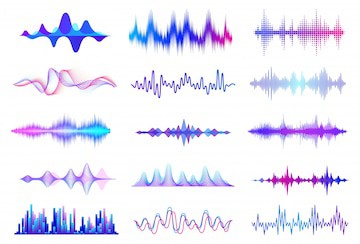As a bit of a preface, this series will focus on the Eurorack modular format; there are other formats that use patch-points. Eurorack is currently the most popular, by far. I’ll be using “Eurorack” and “modular” somewhat interchangeably, except where I specify that something is exclusively true for the Eurorack format, such as voltage specifications or physical measurements. You can assume that any module I mention in detail in this series is built according to (or compatible with) the Eurorack standard unless otherwise stated. Synthesizers like Jupiter 8, Minimoog, Minilogue, Prophet Rev2, Oberheim OB-6, that cannot have any parts replaced with a different part.
Take a look at the article Top Ten Terms to Learn Before Jumping into Eurorack part of the series.

If you make electronic music, you’ve likely stumbled across modular synthesizers. You’ve no doubt seen videos of blinking lights and rectangular panels connected by masses of cables, sometimes being deftly manipulated by hands reaching from off-screen, other times generating music without any human intervention at all. If you’ve felt a sense of wonder when watching these machines bleep and bloop, then you’ve tapped into the heart of the modular community. A constant sense of wonder, surprise, and discovery. Filling a rack with modules can be a deeply personal journey toward discovering your unique sound and style. Modular requires a lot of knowledge up-front and can seem overwhelming to a beginner.
Resources & Goals
There are many great videos and articles about how to jump into modular. I encourage you to seek out and enjoy. My goal for this series is to consolidate some of that knowledge. Alongside some context for what makes modular special beyond the mere sum of its parts. I don’t want everyone who reads this to feel like they need to get into modular in order to create a certain type of sound or music. Rather I hope that you’ll know by the end whether you want to get into modular. I want to enable you to start your Eurorack journey.
Let’s begin with some strengths of modular, and follow up with areas where a hardware synth might be more appropriate.
Top 10 of Things to Know
- Combining the best of Worlds
- Extended Choices new Synth Combinations
- Strong Routing Options
- Expressive and Colourful
- Synthesizes in an Amazing Way
- Modular is Expensive
- Modular outgrows your Eurorack Case
- Difficult to carry with you
- No Replacement for your Favorite Tool
- Not Polyphonic
Combining the best of Worlds
Modular allows you to swap out parts of your synth. If you’ve spent some time with hardware synths (like Jupiter 8). You’ve thought about how nice it would be to be able to use a component from a different synth, e.g. adding a Moog filter to a Juno, or adding the Minibrute’s Metalizer to a Kronos. Modular makes this not only possible but downright simple.

Extended Choices new Synth Combinations
If you buy a second filter, there’s nothing stopping you from using both filters in whatever way you see fit. This allows for combinations of parts that are rarely (if ever) seen in classical synths. If you want to run four completely different filters in parallel signal chains, it’s just a matter of buying the parts and patching them together.
Strong Routing Options
Modular is all about routing! You can wire almost any output signal into an input jack, and your only limits are what jacks are on the front panel of a module. This combines well with the above point, because finding a module that has the inputs you need can be as simple as buying a module and finding a space for it in your case.
Expressive and Colourful
Routing options and the abundance of unique modules makes it very easy to hone in on a tone and style that’s all your own. Even the same set of modules can be used in very different ways by different people, and there’s plenty of room for finding obscure modules in order to set your sound apart from the crowd.
[bandcamp width=350 height=470 album=1507338154 size=large bgcol=ffffff linkcol=0687f5 tracklist=false]Synthesizes in an Amazing Way

Émilie of Mutable Instruments mentioned on a podcast that she had no idea Marbles would be so popular as a melody generator until she saw Lightbath using it extensively in one of his videos. Lightbath is a popular ambient artist in the Eurorack scene. Marbles is a particular type of random generator that can, among other things, create loops of random values.
Additional examples might be using LFOs as audio-rate oscillators, slew circuits as a sort of filter or waveshaper, and so on. For many cases of this concept in action, I recommend checking out the back of the manual for the Make Noise Maths. Maths is a name you’ll see mentioned a lot in the Eurorack world. Maths can do many things, but for now, it’s just important to know that it is MUCH more than the sum of its parts.
Modular is Expensive
Modular is a hobby that allows for many small purchases, which can be overwhelming for both you and your budget if you’re not prepared. You don’t have to spend a lot of money to get lots of interesting and useful sounds out of modular. It’s very easy to justify buying another module so that you can do the next cool thing you think up. It can be cheaper than buying another full synth to achieve one particular sound. You need to assure that you investment makes sense and pays off in your next projects.
Modular outgrows your Eurorack Case
Modules aren’t tied to keyboards. They are generally small enough that you can fit a good number of them into even a small case. Once a case is full, you might find yourself wanting another rack to expand the possibility space of your synth. Be prepared to sell modules you do not use or buy a second bigger case.
Difficult to carry with you
This is more of a corollary to the above point. Cases designed for travel can be heavy and bulky. You don’t have to search long to find horror stories about taking modular cases through customs checks.
No Replacement for your Favorite Tool
Modular is a great tool for doing things that can’t be easily replicated with a classical synthesizer. That doesn’t mean that you can or should expect it to perform certain tasks that are more suited to a dedicated hardware device or computer. As an example, one of my favorite pieces of hardware is the Elektron Octatrack. It is wildly complex (and very powerful as a result). It would be impossible to fully replicate the Octatrack in a modular rack. Always remember that modular is a tool in the toolkit, NOT the be-all end-all of tools.
Not Polyphonic
This is related to the above point. It’s worth addressing: a modular setup will almost never be a practical replacement for a powerful polyphonic synth (e.g. Nord Lead, DSI Prophet Rev2, Moog One). Even if you manage to replicate that functionality, it will likely cost many tens of thousands of dollars at a minimum and be much harder to use for achieving the same sounds. Modular allows deep dives and in-depth tweaking. If you want the sounds and accessibility of a polysynth, your best bet is to just get a polysynth.
Next Steps
As you can see, there’s a lot to consider before you even get into choosing modules and learning how to use them. If you’re feeling excited, but also overwhelmed after going through those points, I’d recommend taking a look at Knobs’s “Why to Modular”; it’s a video series that serves as a gentle introduction to the general philosophy of modular, and is very light and friendly. (I also recommend watching his other videos, like the one he did on the Octatrack, because he makes some truly beautiful gear demos.)










